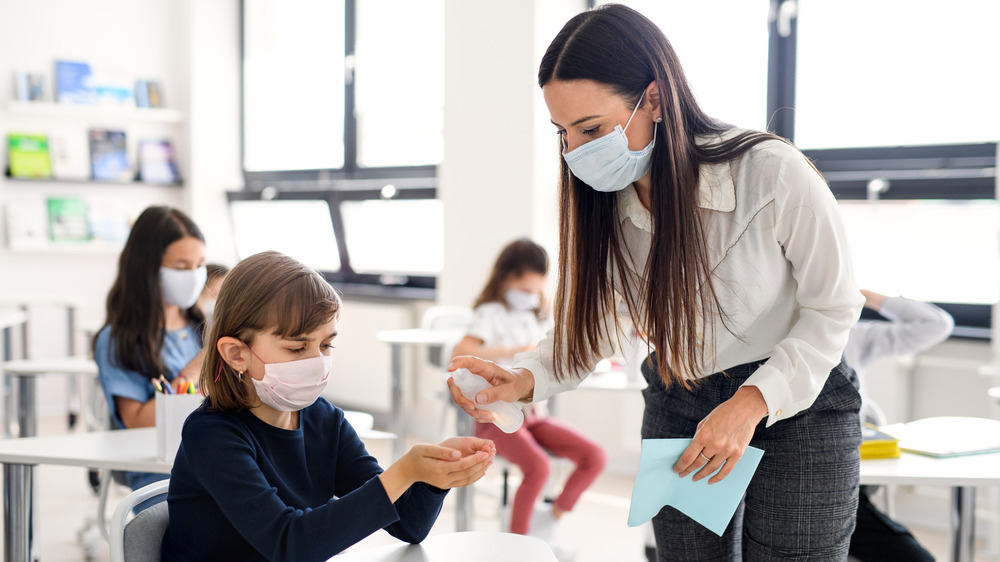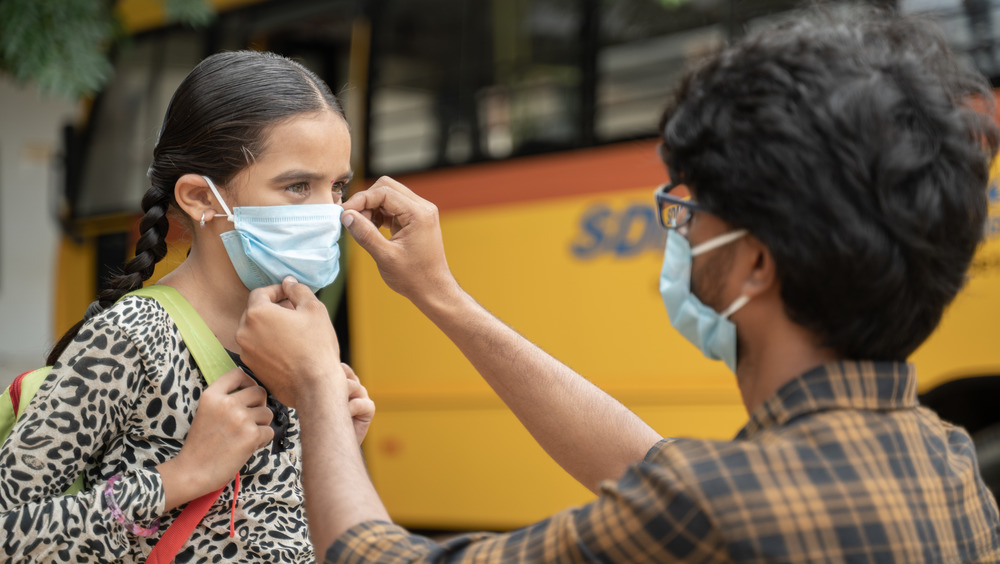The One Big Step Schools Can Take To Cut Down On COVID, According To The CDC
The CDC has posted new recommendations for schools and childcare centers to reduce and help stop the spread of COVID-19, and it's all about maintaining good ventilation. The CDC did mention it before but has now expanded on these recommendations. Here are the details.
The CDC says the first step is to keep as many windows as possible open in the classrooms to keep the air circulating. They are also recommending keeping the classroom door open, even if it's just a crack. Why? Proper ventilation is important because COVID-19 is spread through aerosols or tiny particles in the air. Open windows allow those particles to move outside instead of staying indoors, potentially multiplying and infecting a student or staff member. Even keeping a window or a door cracked will help with ventilation and is better than keeping the windows closed, so the CDC is urging schools to open as many windows as possible while still keeping kids safe.
Windows should not be kept open if they are located in areas where kids could fall or be exposed to extreme temperatures, or if it could trigger asthma symptoms. However, if the weather isn't extreme, simply adjust the thermostat in class to keep it comfortable. When it comes to proper ventilation, there are some other precautions schools can take to help stop the spread of COVID-19.
More ventilation safety measures for schools
The CDC also recommends keeping a child-safe window fan in classrooms to keep air circulating. A window fan will help remove any COVID-19 aerosols from inside the classrooms and keep fresh air coming in through the windows. Just make sure the window fan is properly secured so kids can't move it or pull it down.
Using portable air cleaners with HEPA filters can also help, especially in the nurse's office or isolation rooms. Just make sure the filter is new and installed properly. Another option is to use ultraviolet germicidal irradiation (UVGI), which can help kill the COVID-19 virus. This safety measure requires schools to hire a professional to install.
Another way to decrease the spread of COVID-19 is by spending extra time outdoors. Have class, lunch, or other activities outside when the weather allows. Lunch is especially concerning because students can't wear masks when eating, so moving lunchtime outside is a great way to keep kids and teachers safe. Ventilation fans in restrooms and kitchens should be kept on during school hours and for two hours afterwards, as well.
And it's not just about the school building. Don't forget school buses and other means of transportation when thinking of ways to allow proper ventilation! Drivers should open as many windows as possible to keep the air circulating while kids are riding to and from school together.
Good ventilation and air circulation are essential in schools to help reduce the spread of this virus, and the good news is that the weather will soon warm up, making these suggestions even easier to implement.

